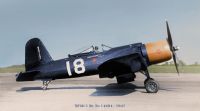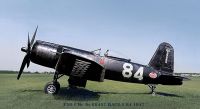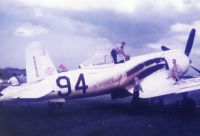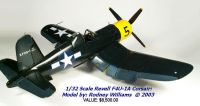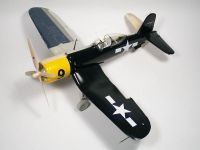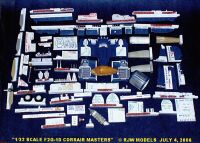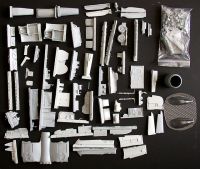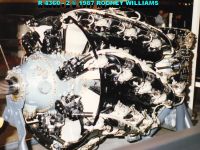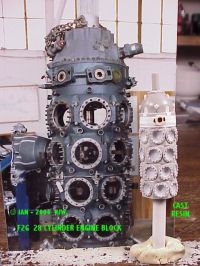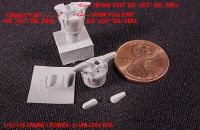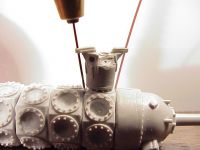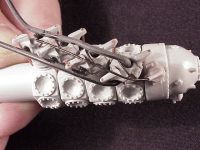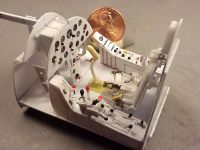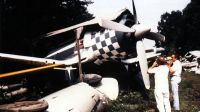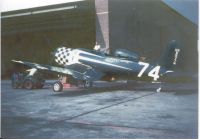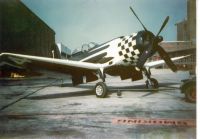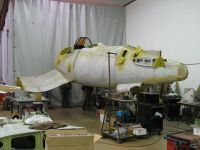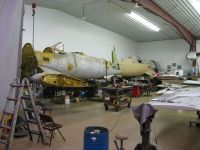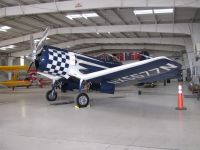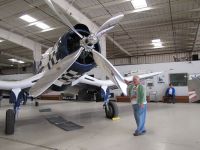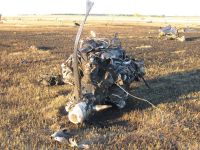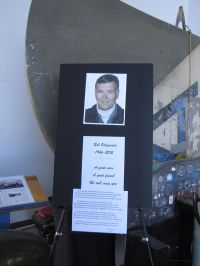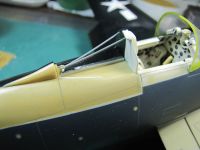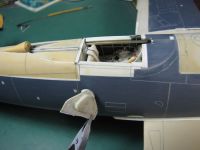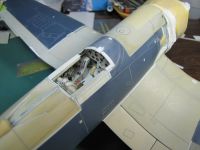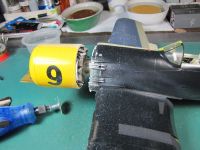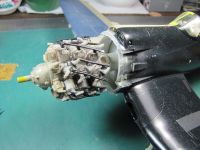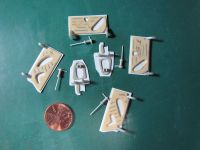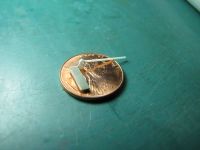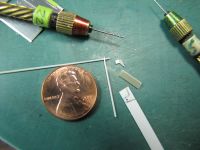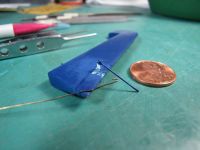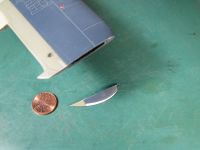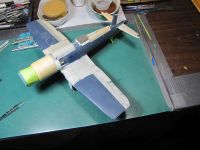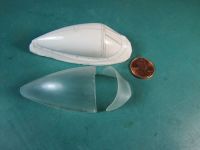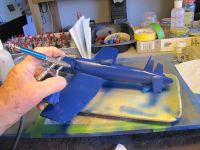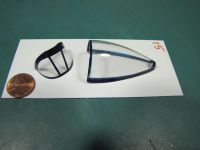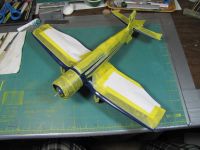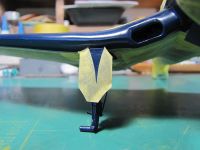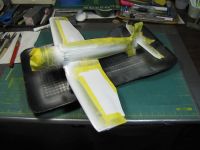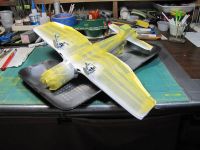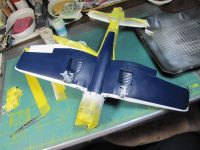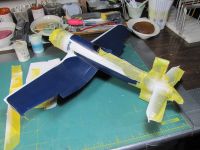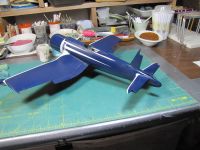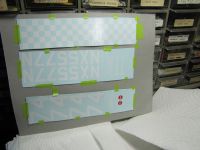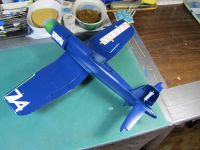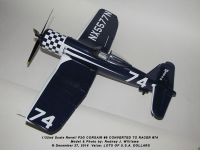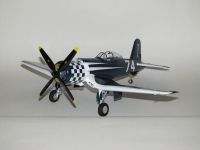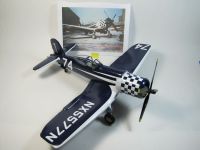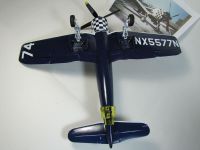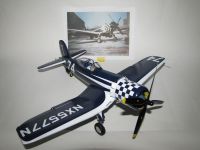F2G-2 Corsair Racer #74 – B.U. No. 88463
By Rodney Williams
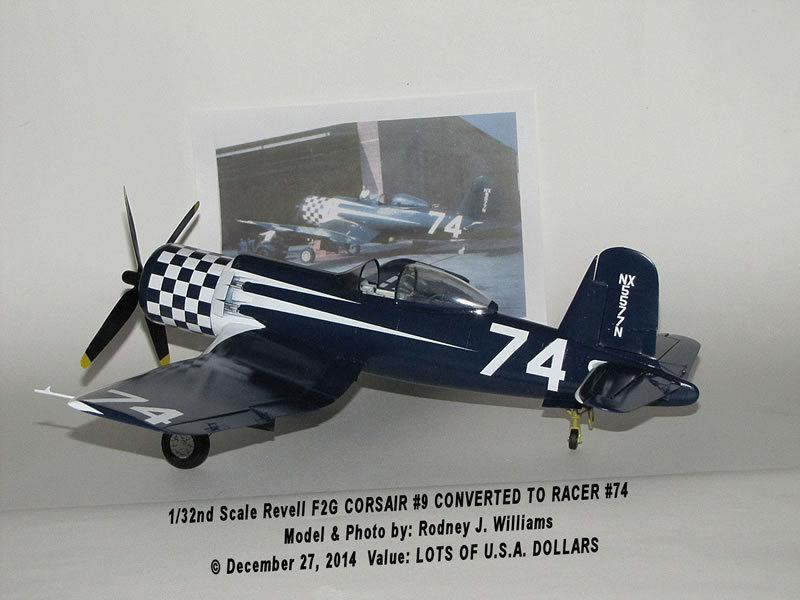
F2G-2 Corsair Racer #74 – B.U. No. 88463
Text & Digital Images by: Rodney J. Williams
Email: fox7077@gmail.com
© Copyright: March 5, 2015 – All Rights Reserved
I begin this story where it started in early 1984 then I will present the present day information.
If you are not familiar with the National Air Races that were held in Cleveland, Ohio, here’s a brief bit of history.
Prior to WWII air races were held at the local Cleveland, Ohio airport, but were suspended with the outbreak of that “great” war. Once it ended, the races resumed in 1946 and continued until 1949.
Cook Cleland was a Navy pilot during that war and somehow he was able to buy 4 surplus F2G Corsair fighter planes from the Navy between the years of 1947 and 1949.
A gentleman by the name of Ron Puckett purchase another surplus F2G from the Navy and the races began shortly.
On April 1, 1987 I received the following information from Jim Butler who was one of the top administrators with The Society of Air Race Historians (SARH), which was located in the Cleveland, Ohio area.
The data starts with CLASS, followed by a B.U. No.; then TYPE of AIRCRAFT, FOLLOWED WITH A RACE NUMBER and OWNER:
- XF2G-1, 14694, FG-4, No. 18 - NX91092 - Ron Puckett
- F2G-1, 88458, FG-4, No. 57 - N5588N - Cook Cleland
- F2G-2, 88463, FG-4, No. 74 – NX5577N - Cook Cleland
- F2G-1, 88457, FG-4, No. 84 – NX5588N - Cook Cleland
- XF2G-1, 14693, FG-4, No. 94 – NX5590N - Cook Cleland
Since 1984 I have documented about 300 pages of technical data on the F2G Corsairs that were made by Goodyear Aircraft Corporation (G.A.C.), which is located next to the large black “blimp” hanger at Akron, Ohio’s airport. At present I am in the process of scanning these documents and hopefully they will be saved on a master DVD by the end of this month [March 2015].
THE F2G CORSAIR RACE MODEL #74
During the early 1980s and through the late 1990s I dedicated myself to build accurate 1/32 scale F2G Corsair plastic models using the only F4U-1A Corsair kit by Revell.
On a scale of 1 to 10 my knowledge of scratch-building was at least a 1 (one). ONE represented nothing, none, zero, zilch, and in the Spanish language it was…NADA.
As the days turned into weeks, then months and into years I became a “master scratch-builder” by the year 2004. Since 2004, I have added a few more scratch-built items to several of my models that I have here at home and for several customer models. In early 2003 I started to build my third and fourth F2G models which were classified as XF2G-1s with B.U. numbers of 13471 and 14691.
No. 13471 was a standard F4U-1A Corsair that had a Pratt & Whitney R-4360-2 twenty eight (28) cylinder engine attached to it, including a new 14’0” diameter four blade propeller. The new elongated cowling was painted with Goodyear’s standard Gloss Yellow paint with a black number five (5), painted on both sides.
No. 14691 was classified as a XF2G-1 and was most likely the first true production F2G Corsair. From the windscreen to the front of the vertical fin the top fuselage section had been cut off in a straight line. A new bullet proof windscreen had been designed and installed, including a new one piece clear view canopy that slid aft of the cockpit area. The pilot used a crank handle system to open and close said canopy. The aircraft had a floor in it, including a armor plated head rest and two roll bars. This new F2G Corsair had the new “PW” 28 cylinder engine installed, including the larger 14’ 0” diameter prop. Like #5, the cowling was painted with Goodyear’s yellow paint and a black #9 painted on both sides of the aircraft.
Bill Ferrante was and still is a member of our IPMS/USA San Jose, California model club and had got into producing cast-resin model parts with another modeler by the name of Chris Bucholtz. We three got together and produced a conversion cast resin kit for the old Revell F4U-1A kit in 2003. We produced the conversion kit until mid-2006 then ceased production.
I used part of one cast resin kit for my #5 model and painted it in its standard Navy blue color and included the yellow for the cowling with the #5 on it. I used Tamiya’s XF-17 for the blue and X-8 for my yellow color.
The second conversion kit was used to build my #9 F2G model. I decided to paint this model with the same Tamiya colors as I did on my F4U-1A #5. However it was only painted on the left side down the centerline. A clear coat of Future Floor Wax was then applied over the entire model.
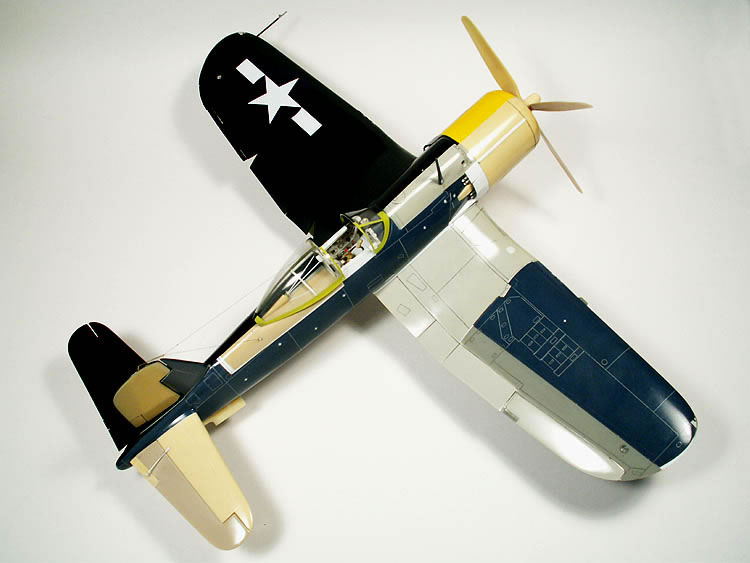
Bill and Chris wanted to use a few photos of the model on their Obscureco website to help sell the conversion kit.
The engine, prop, cockpit, landing gears and wheel wells were not painted so that potential buyers could see most of the parts that went into the conversion kit.
I lucked out and got both models finished in time for our 2004 annual model contest in San Jose, California.
I’m enclosing a few photos of the two real aircraft and both models, including an image of our cast resin kit. Bill certainly knew how to cast “perfect” resin model parts.
BACK TO MY #74 F2G RACER
I took photos of the real #74 at the Cleveland air show in 1949 and more photos of it at Walter Soplata’s home in 1987. The aircraft was purchased by the Crawford Museum of Cleveland, Ohio and was sent to Bob Odegaard’s restoration facility in Fargo/Kindred, North Dakota in 1999. #74 was restored to its original 1949 status.
While attending the annual IPMS/USA Chris Hewitt contest named Modelzona at the CAF Museum in Mesa, Arizona in November, 2011 a big surprised landed on me as I did not know that the F2G racer #74 was there. Number 74 was resting on its landing gear inside the second hanger and was restored to its 1947-1949 status. I took lots of photos of it which were displayed on LSP’s website in 2012.
On September 7, 2012 Mr Robert “Bob” Odegaard crashed the F2G and lost his life in the process. Of course the plane was a total loss.
For some unexplained reason in the summer of 2014 I got the bright idea to change the exterior finish of my F2G - #9 and paint it in #74’s original paint scheme.
First off I had to contact Dave Newman who has made decals for me in years gone by and see if he could make the decals for #74. His reply was “yes”, so I sent him all the necessary data. Dave had made the decals for #74 in 1/72 scale over a decade ago. With this decal data solved I was off to revising the old #9 model.
REVISIONS BEGIN
I looked at a photo of the real #74 that was taken at the Vought factory in 1947 and noticed that the armor plate/head rest and roll bars were removed from the F2G. The wing tips were also removed from the aircraft. The front and rear antenna post, including the wire had also been removed. There was no raised elongated hood on #74.
I removed my homemade vac-u-formed canopy along with the roll bars, armor plate and headrest. Next I removed the gun switches and gun sight from the instrument cover then applied some masking tape over the cockpit area so as not to damage anything within.
The cowling was sawed off so I could paint the engine, then I re-installed the cowling. (Hindsight-Foresight). I was not going to cut apart the fuselage, which was necessary to paint the cockpit, so I should have not cut off the cowling and just left the engine unpainted.
The elevators and rudder was removed from the tail section of the model and I carefully removed the 5 small trim tabs. Next, I removed both of the ailerons and took off the trim tabs.
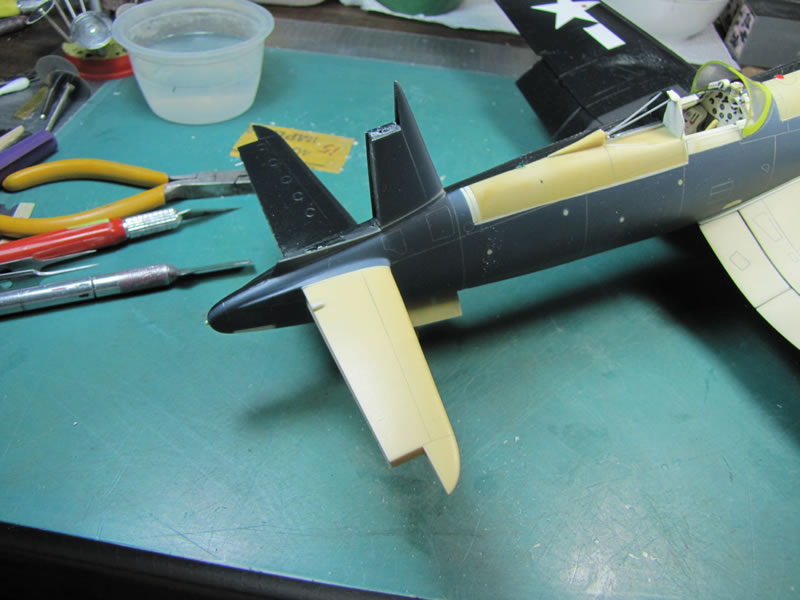
I removed all six landing flaps then carefully removed the two hydraulic lines from the kit tires. Many of these parts had been put together with Elmer’s white glue, which let me get the parts loose without much trouble.
The four main landing gear doors were removed including the two front doors. I removed the small cast resin hydraulic cylinders that opened and close the doors.
In years gone by I have soaked my painted model parts in Denatured Alcohol (DA), to remove my Tamiya paints. I put all of my door parts in DA then later I just brushed off the paint. I left these parts in the DA too long and it melted just about everything so I had to make new parts.
During this removal and cleaning process several parts got damaged so I just made new ones. From then on I carefully removed the rest of the blue and yellow paint, including the Future Floor Wax clear coat from the model.
My three view drawing of #74 for 1947 showed the amount in inches for the wing tip removal, so this was accomplished without any problems. I kept these wing tip pieces in my “Corsair Spare Parts” box. Hey! Who knows I may change the model back to #9 or make it into another F2G.
The paint and clear coat was removed from the canopy and from the front of the windscreen. I sanded these parts with 3M wet-dry 2000 grit sandpaper. I keep my sandpaper in clean water so that the backing material is nice and soft. I apply some of my polishing cream on these clear parts with a Q-Tip. My polishing paste is called Blue Magic-Metal/Plastic Polishing Cream. I bought this cream in 1989 and it is still good in 2015.
A few days later I dip the canopy into my floor wax and place it on my special portable “wet” card and cover it with a clear plastic cover so it can dry. My cover keeps any room dust from settling on the future and screwing up the finish.
PAINTING THE MODEL
My records say the aircraft was painted a Slate Blue color. I looked at the photos of #74 that I took down at the CAF Museum in 2011 and mix up a color that resembled it.
I learned long ago from the IPMS/USA National Head Judge Mr Wayne Wachsmuth who stated the following:
“IT IS NOT WHAT COLOR IS ON THE MODEL!”
“IT’S HOW IT WAS APPLIED.”
Wayne spent about ten minutes explaining WHY & HOW we National Judges should judge the paint. **Case Closed**
I used one of my 3 Badger-200 internal mix air brushed to apply my blue colored paint to the model. After the paint had dried real good, I carefully mask off the model in certain areas so I could apply Tamiya’s X-2 Gloss White paint and then remove the masking tape within an hour or so. With more drying time I was ready to add my Future Floor Wax clear coat all over the model.
I began the decal preparation by cutting through the thin decal film that surrounds all of the decals. I always cut around each letter and number in this scale, including the insides of letters like “O” – “A” – “P” and inside of numbers like “3-8-9-10”.
I have mixed my Microscale SET & SOL together in one bigger bottle for more than 20 years then refill the small bottles. I add a drop of this mix on top of the decal prior to removing it from its paper backing and I add a drop of it to the area on the model where the decal is to be placed. Clean water is also added on the model. The decals are slid onto the model and moved into their proper place. I then removed any excess water and Microscale fluid.
A minute or so later I smooth out the decal with a clean wet ½” wide soft brush. A few hours later I gently wipe down the decals with ordinary toilet paper, which has been lightly damped in water, then I use a soft clean rag to re-wipe the area. My final application is applying a clear coat of Future over the decals and the entire model.

I inspect my model and if it passed my high standards I proceed to Final Assembly. I re-attaching the gear doors, hydraulic cylinders, tires, hydraulic lines, ailerons with their trim tabs and all 6 flaps. The tail plane parts are next in line for attachment, then comes the canopy and last but not least I just push on the prop as it has to be removed so that the model will fit in my store bought plastic cases.
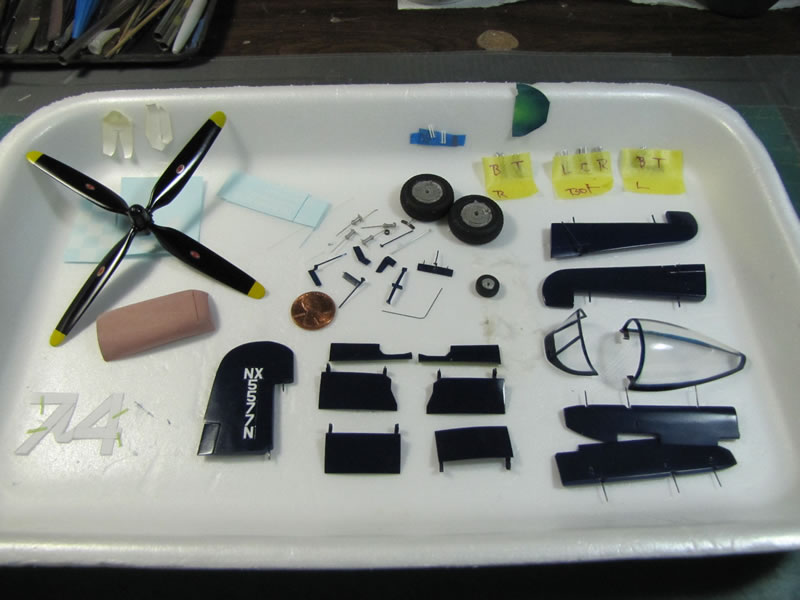
With a bit more inspection, it’s time to take some digital images of the model.
If all goes as planned I will take my model to the annual model contest called WestFest in Grand Junction, Colorado.
The IPMS/USA Grand Junction Scale Modeler’s Society club was established in 1975 and this year’s event will be held on April 25 & 26. This will be my 3rd visit to their excellent show.
Most likely this will be my last presentation to LSP as I have no more 1/32 scale models to build. At almost 84 years old I have to quit building due to the “shaky-hand” problem that I am having with both of my hands.
Enjoy!
Rodney J. Williams
© Rodney Williams 2015
This article was published on Wednesday, March 18 2015; Last modified on Thursday, March 19 2015

